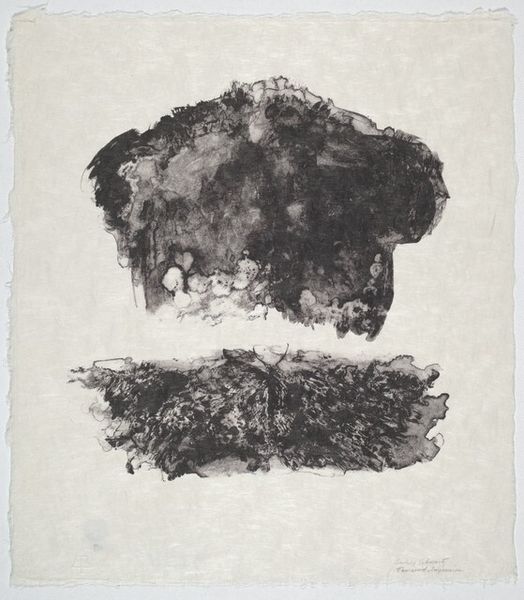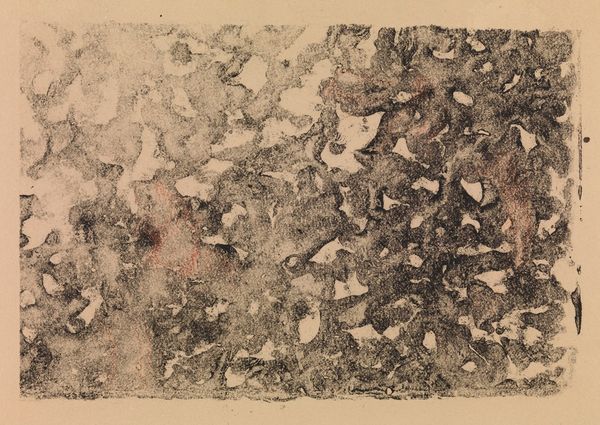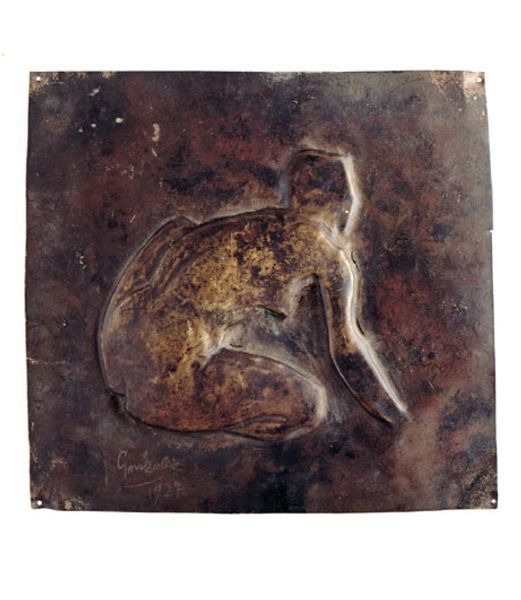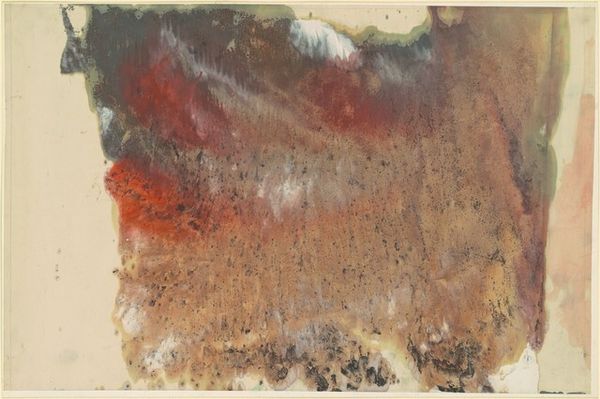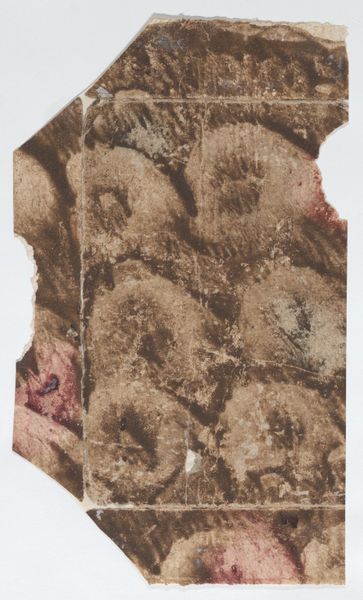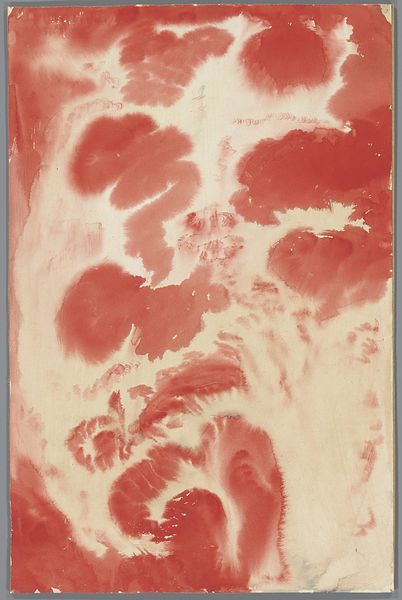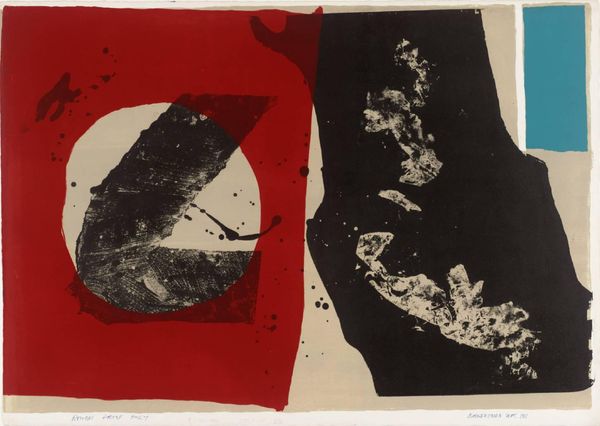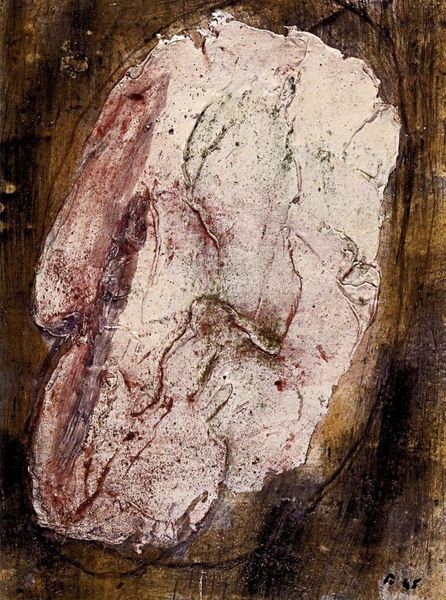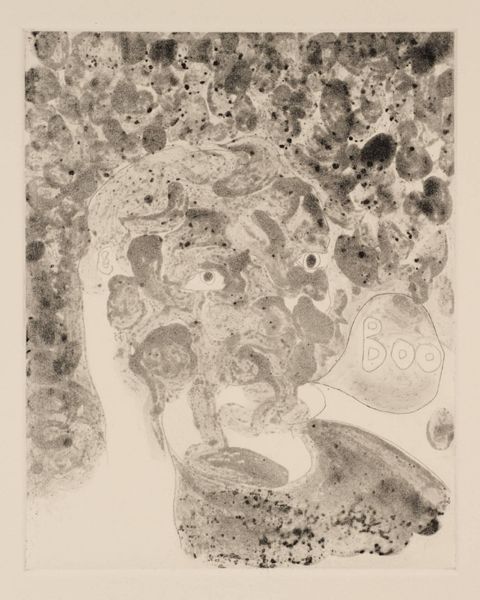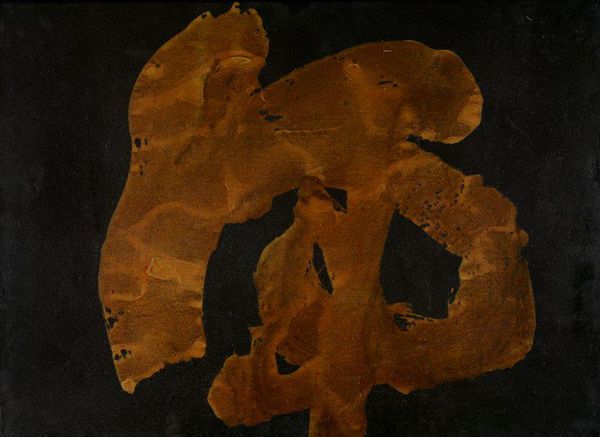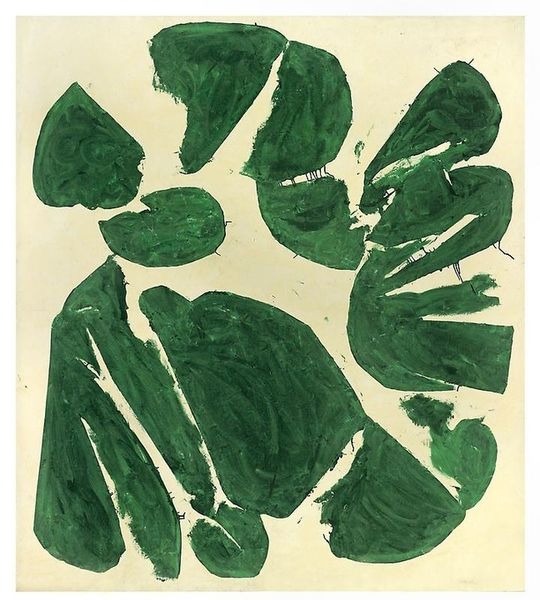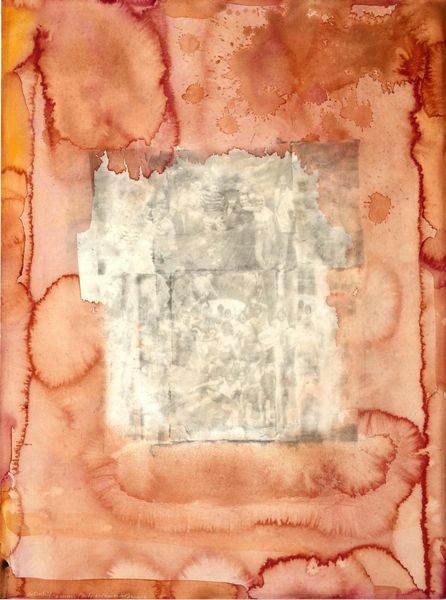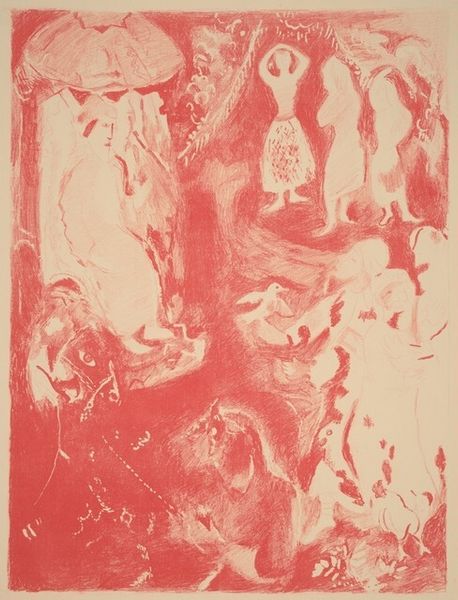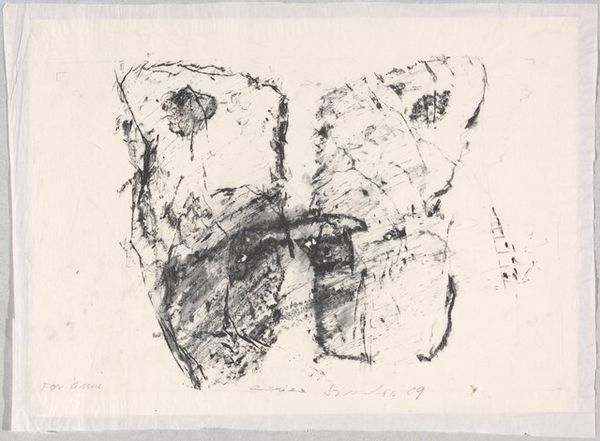
print, etching
#
abstract-expressionism
# print
#
etching
#
geometric-abstraction
#
abstraction
Copyright: National Gallery of Art: CC0 1.0
Curator: Right now, we're looking at Garo Antreasian's "Specimen" from 1960, an abstract etching printed on paper. It strikes me as a quiet, contemplative sort of piece. Editor: Immediately, I see something fragmented, geological almost. Is it just me, or does the central shape suggest a continental landmass, pulled apart at some fault line? It feels very grounded, despite its abstraction. Curator: Yes, grounded yet floating! Antreasian, heavily involved in the Tamarind Lithography Workshop, explores textures beautifully here. You get lost in the mottled surfaces, the way the earthy browns contrast with the muted blues of the background. It's reminiscent of cracked earth or aged leather. Editor: Absolutely. And those colours! That earthy palette makes me think about resource extraction, the violent geographies of mining, the way landscapes are broken apart, dissected. It could be a meditation on ecological loss. Curator: Perhaps. Or maybe he's looking inward. Abstract Expressionism often felt like a deeply personal journey, excavating internal landscapes, bringing buried emotions to the surface. That jagged division could represent inner turmoil. Editor: I think we cannot separate the personal from the political; this internal reading also has societal implications. These broken fragments could reflect social divisions as easily as emotional states, all mirroring our changing world and humanity’s intervention on the environment. Curator: It’s that ambiguity, isn’t it? The work invites introspection but doesn't provide any easy answers. Which is true to life I feel. Editor: Precisely. “Specimen,” this sample offers an opportunity for discourse around interconnected social and ecological issues, it invites reflection on fragmented geographies and experiences, internal or external, as well as the hope for wholeness and restoration. Curator: Ultimately, it's an invitation to find your own meaning, isn’t it? It’s a work that stays with you, and evolves along with you. Editor: Leaving its trace, just as any geologic or societal change always leaves its marks.
Comments
No comments
Be the first to comment and join the conversation on the ultimate creative platform.
